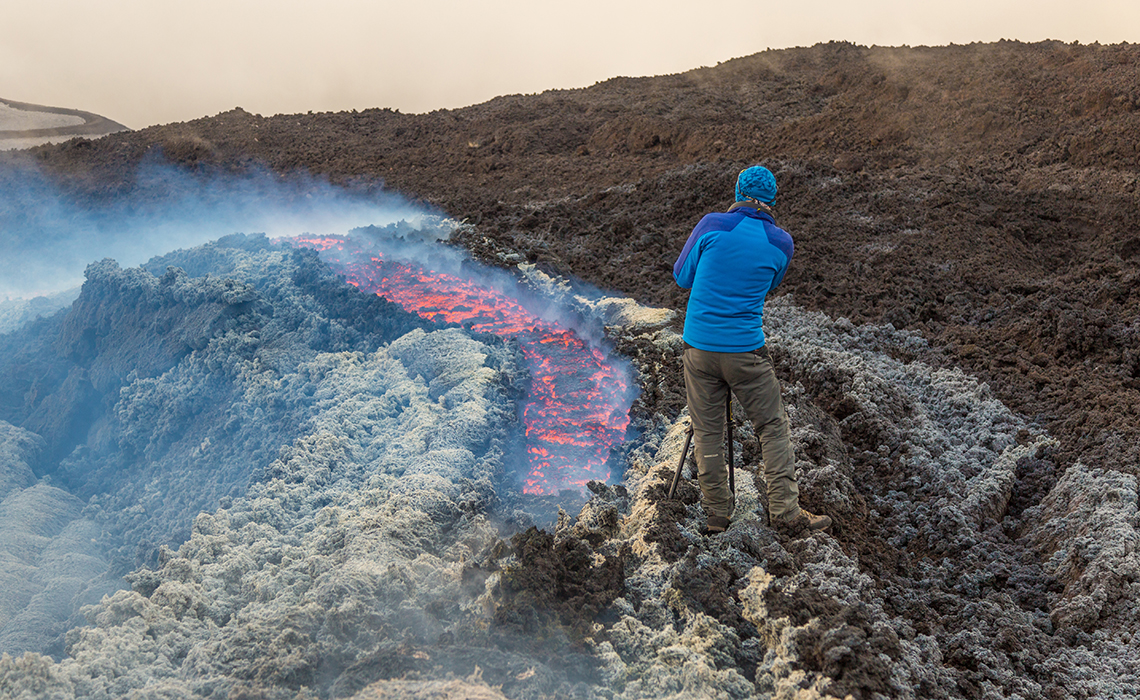Despite vast scientific efforts over many decades, prediction of volcanic eruptions remains highly challenging. Recent research on the Italian volcano Mount Etna, one of the most active volcanoes in the world, may have developed a new tool for the purpose. By measuring air concentrations of the naturally occurring radioactive gas radon, scientists gain insight into the magmatic events in the volcano’s subsurface. Hopefully this will enable early warning on future eruptions.
Mount Etna (height 3,300 m) is situated at Sicily, Italy. Mount Etna is one the most intensely monitored volcanoes in the world. For a practical researcher, a large advantage is the presence of roads on the sides of the mountain. The level of radon – which stems from the decay of uranium in the soil – has been monitored over the most recent years. Since other volcanoes are less intensively monitored, it is not yet established whether elevated levels of radon are a universal precursor for volcanic eruptions. Still, the method does seem to work for Etna.
“Historically, the Italian Institute of Geophysics and Volcanology (INGV) has observed a correlation between elevated radon concentrations and upcoming Etna eruptions. We are now helping to take this type of observation to the next level, as we have installed a network of outdoor radon sensors across the volcano,” says Senior Scientist Vincent Breton of Laboratoire de Physique de Clermont (LPC) of the French National Centre for Scientific Research (CRNS).
Internet-of-Things
The new sensor network is a highly interdisciplinary collaboration involving CNRS National institutes of Sciences of the Universe (INSU) and Nuclear and Particle Physics (IN2P3), INGV, and several other academic and industry partners. The collected data are transmitted to France thanks to GARR, GEANT and Renater connectivity. The project profits from recent IoT (Internet-of-Things) developments. While we humans generally want broadband for our internet communications – to be able to exchange video and audio messages etc. – machines like radon sensors that only need to send limited-sized data packages can make do with narrowband solutions. This minimizes costs and energy consumption, while also increasing the transmission range.
Data transmission over 1,200 km
For the Mount Etna sensor network communications, a LoRaWAN (Long Range Wide Area Network) IoT solution was chosen. When collected, the data will travel 1,200 km from Sicily to a dedicated server at the Clermont-Ferrand University in France.
“The solution allows us to monitor the volcano continuously all-year round in near-real-time,” notes Vincent Breton. “While we are keen to help develop methods for prediction of eruptions, our volcanologist colleagues will also be able to use the measurements for more fundamental scientific purposes. They do believe the radon concentrations to be indicators for various seismic-tectonic phenomena in the underground.”









